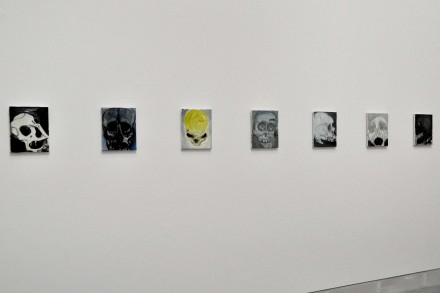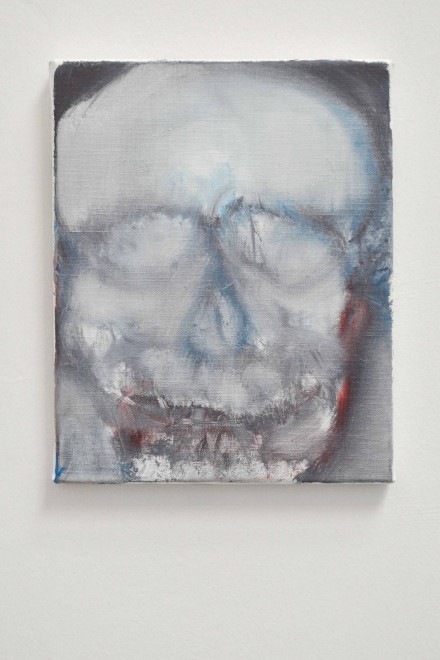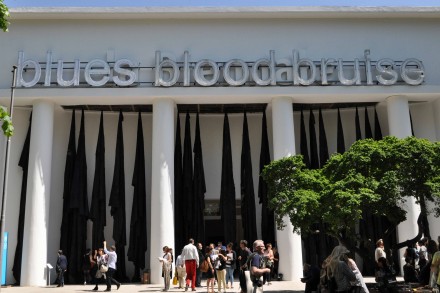
At the entrance to the Biennale’s Central Pavilion, via Sophie Kitching for Art Observed
The Central Pavilion in Venice’s Giardini is the second site for All the World’s Futures, the main curatorial project around which the Biennale centers itself. Featuring another series of artists spread out inside the exhibition space’s remarkable white facade, the exhibition continues its investigation of debris and late capitalism through a more playful, yet equally critical set of works from its counterpart at the Arsenale.
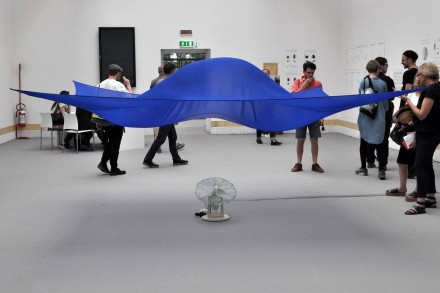
Hans Haacke, Blue Sail (1964-65), via Sophie Kitching for Art Observed
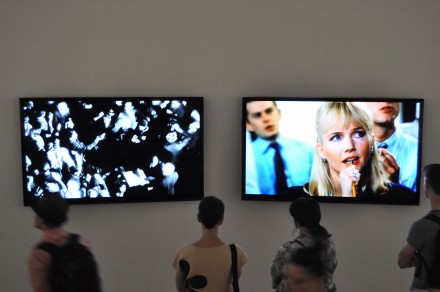
Isaac Julien, Kapital (2013), via Sophie Kitching for Art Observed
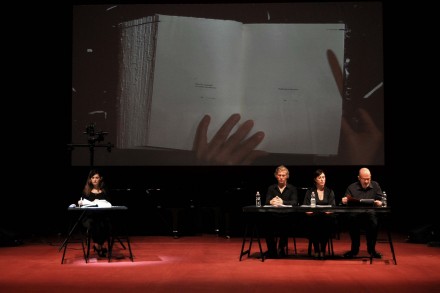
Joana Hadjithomas & Khalil Joreige, Latent Images – Diary of a Photographer (2013), via Sophie Kitching for Art Observed
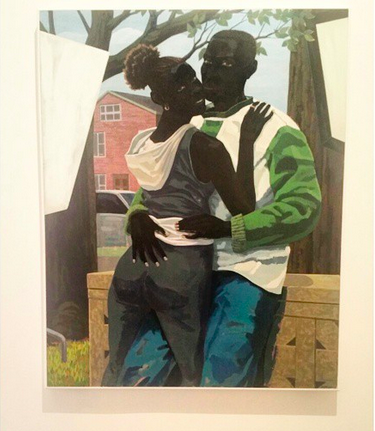
Kerry James Marshall, Untitled (Lovers) (2015), via Art Observed
Entering the space, visitors are first encountered by a series of large-scale text works by Glenn Ligon, hung over the Pavilion entrance and continuing his work investigating the textual variants of musician Steve Reich’s classic tape-based composition Come Out. Reading Blues, Blood, Bruise in immensely-scaled letters that cover over the Biennale’s logo, the work turns the exhibition’s facade into a statement on police violence, writ large.
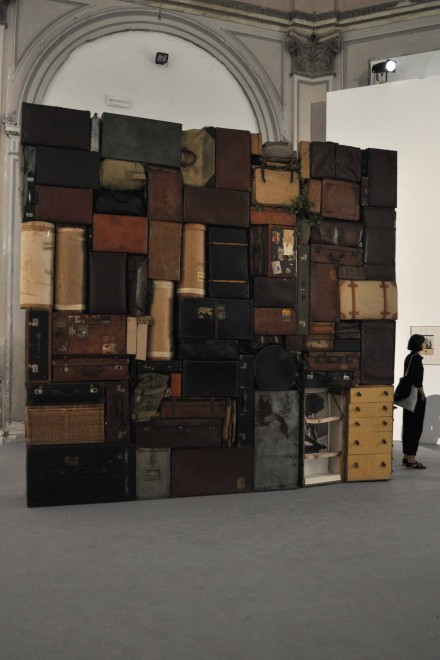
Fabio Mauri, Il Muro Occidentale o del Pianto (1993), via Sophie Kitching for Art Observed
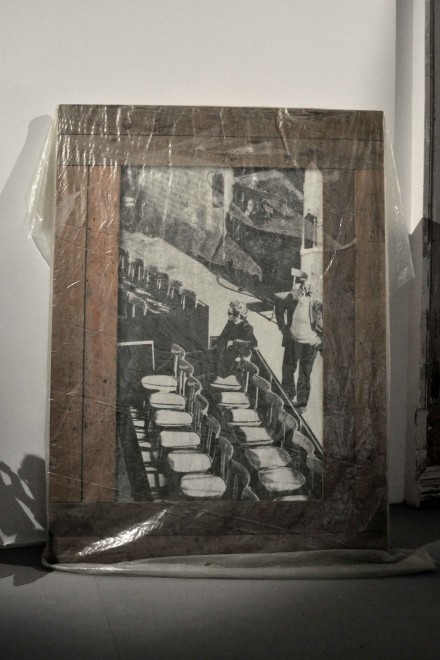
Fabio Mauri, Fabio Mauri e Pier Paolo Pasolini alle prove de che cosa é il Fascismo 1971 (2005), via Sophie Kitching for Art Observed
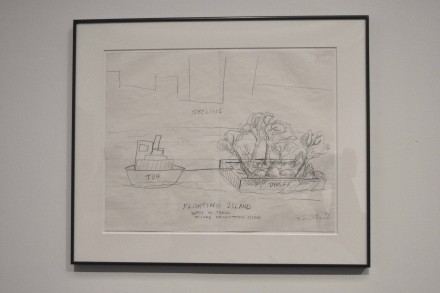
Robert Smithson, Floating Island – Barge to Travel Around Manhatten Island (1971), via Sophie Kitching for Art Observed
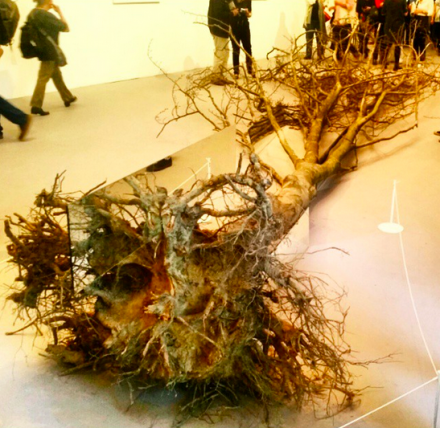
Robert Smithson, Dead Tree (1969), via Art Observed
Inside, works playing on compartmentalization, space, and the mass-produced aesthetics of commodity capitalism were out in force, from a subtly critical Tetsuya Ishida painting depicting a youth being tucked awaty, piece by piece into consumer packaging at his funeral, to a series of photographs by Andreas Gursky, depicting the landscapes of American capital (including a lonely looking Toys ‘R Us and the crowded floor of the Chicago Board of Trade). In a play on the compartmentalization and interiority of the exhibition space, Thomas Hirschhorn had seemingly destroyed the ceiling of the Central Pavilion, allowing papers and debris to come streaming down from the gaping hole above.
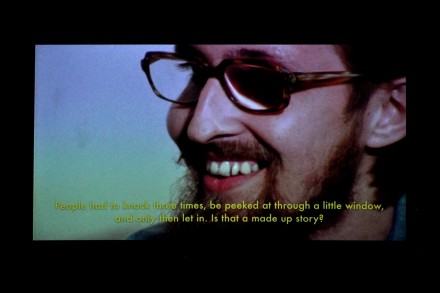
Naeem Mohaiemen, Last Man in Dhaka Central (The Young Man Was, Part 3) (2015), via Sophie Kitching for Art Observed
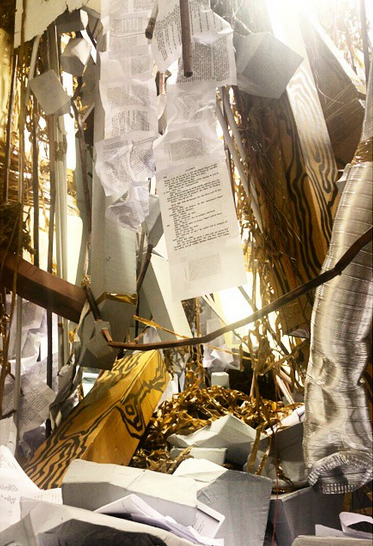
Thomas Hirschhorn, Ceiling Off (2015), via Art Observed
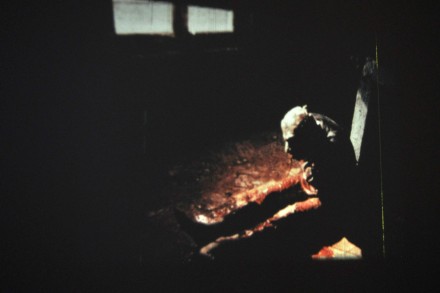
Christian Boltanski, L’Homme qui tousse (1969), via Sophie Kitching for Art Observed
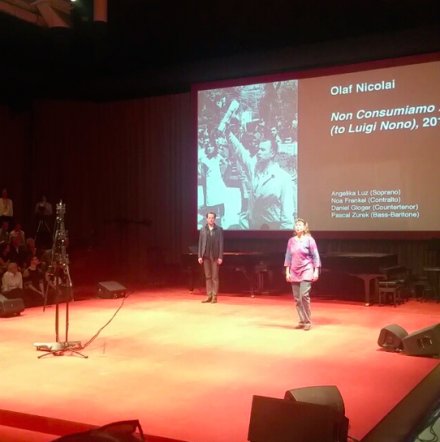
Olaf Nicolai, Non Consumiamo… (to Luigi Nono) (2011), via Art Observed
British artist Jeremy Deller was also on hand at the Giardini, showing a series of works that continued his witty inversions of capitalist and class-driven dynamics. A sizable banner, bearing the text “Hello, today you have day off” hung from the ceiling near one of the Central Pavilion entranceways, playing off the industrial soundscapes of his other work in the exhibition, Five in the morning, Joan O’ Grinfield, Just What We’d All Like To See 1843-1873, a single, diminutive jukebox filled with recordings of factories and industrial noise. The result, a cunning juxtaposition of leisure and labor, made good on the spectre of Marx that hangs over Okwui Enwezor’s Biennale, particularly the political economist’s understanding of leisure as a direct counter-necessity to exploitation in industrial capital.
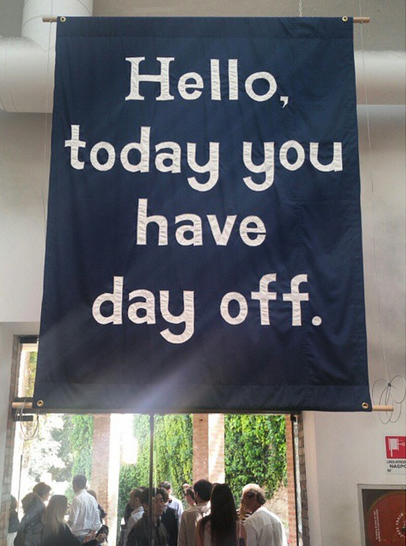
A Banner by Jeremy Deller, via Art Observed
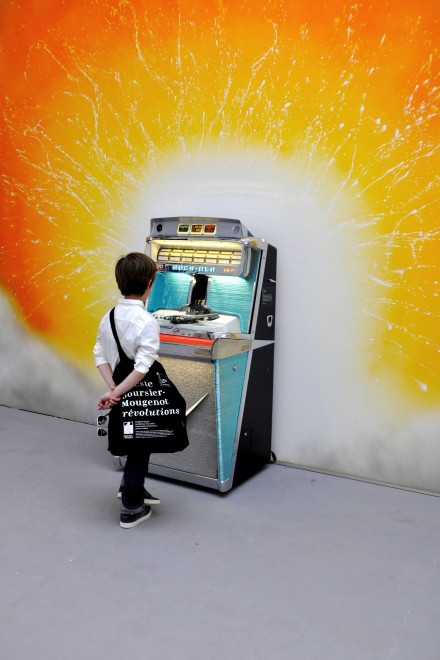
Jeremy Deller, Five in the morning, Joan O’ Grinfield, Just What We’d All Like To See 1843-1873 (2015), via Sophie Kitching for Art Observed
In another corner, Christian Boltanski’s L’Homme qui Tousse was shaking up visitors, depicting a masked character retching and bleeding in a disturbing spectacle. Also of note was Hans Haacke’s Blue Sail, an installation featuring a blue canvas held aloft and blowing by a standard house fan, while forcing viewers to accommodate its imposing support strings. The preview also included a performance of artist Olaf Nicolai’s Non Consumiamo…, a performance tribute to composer Luigi Nono, who in turn drew his inspiration from the 1960’s student protests in Paris.
The Giardini and Arsenale will remain open to the public through November 22nd. Check back later this week for more coverage from Venice.
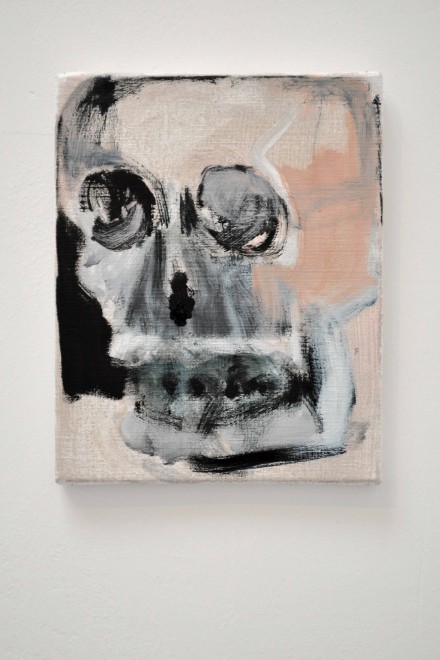
Marlene Dumas, Skulls (2013-2015), via Sophie Kitching for Art Observed
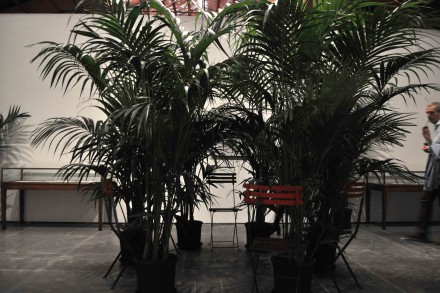
Marcel Broodthaers, Un jardin d’hiver (1974), via Sophie Kitching for Art Observed
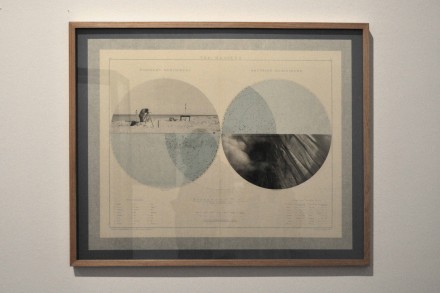
Elena Damiani, from the series The Victory Atlas, 2012-2013, via Sophie Kitching for Art Observed
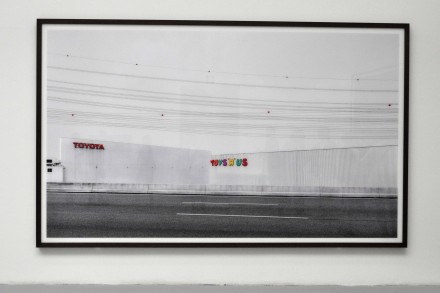
Andreas Gursky, Toys R Us (1991/2015), via Sophie Kitching for Art Observed
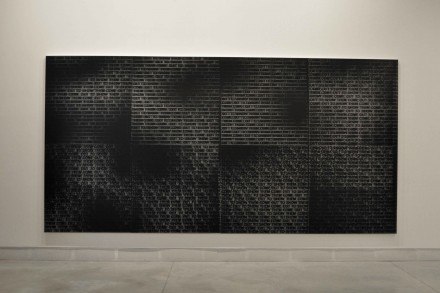
Glenn Ligon, Come out (2015), via Sophie Kitching for Art Observed
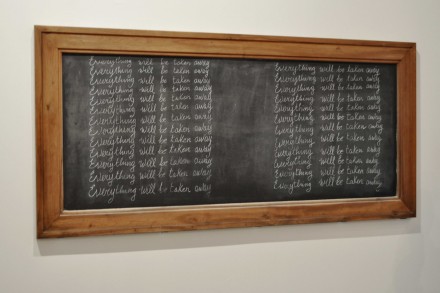
Adrian Piper, Everything #21 (2010-13), via Sophie Kitching for Art Observed
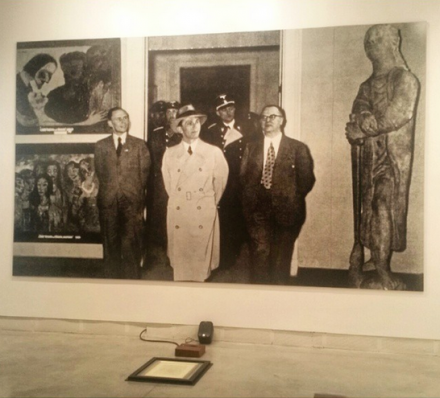
Installation by Adrian Piper, via Art Observed
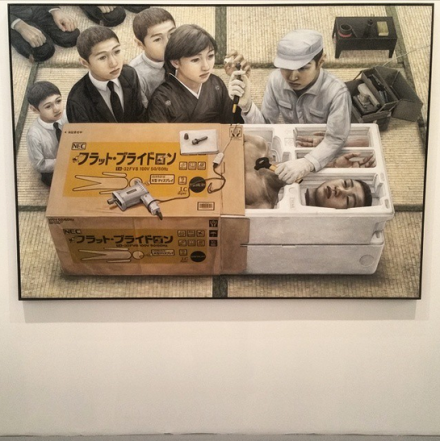
Tetsuya Ishida, Recalled (1998), via Art Observed
— D. Creahan
Read more:
Venice Biennale [Exhibition]




